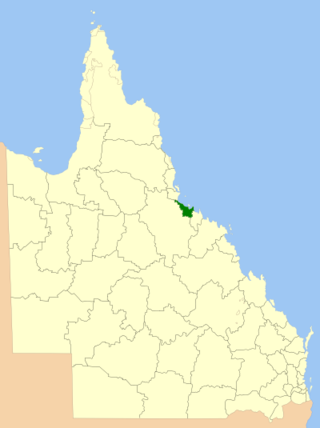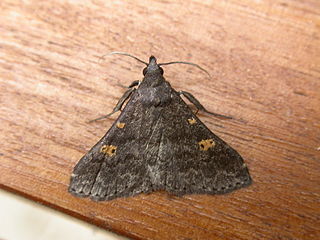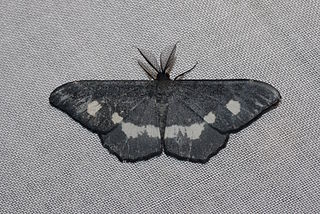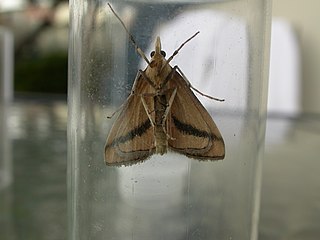
Vegemite is a thick, dark brown Australian food spread made from leftover brewers' yeast extract with various vegetable and spice additives. It was developed by Cyril Callister in Melbourne, Victoria, in 1922, and it was first sold in stores on 25 October 1923.

Richmond is a rural town and locality in the Shire of Richmond, Queensland, Australia. In the 2016 census, the locality of Richmond had a population of 648 people.

Frederick Walker was a British public servant of the Colony of New South Wales, property manager, Commandant of the Native Police, squatter and explorer, today best known as the first Commandant of the Native Police Force that operated in the colonies of New South Wales and Queensland. He was appointed commandant of this force by the NSW government in 1848 and was dismissed in 1854. During this time period the Native Police were active from the Murrumbidgee/Murray River areas through the Darling River districts and into what is now the far North Coast of NSW and southern and central Queensland. Despite this large area, most operations under Walker's command occurred on the northern side of the Macintyre River. Detachments of up to 12 troopers worked on the Clarence and Macleay Rivers in NSW until the early 1860s and patrols still extended as far south as Bourke until at least 1868. After his dismissal from the Native Police, Walker became involved in the pastoral industry as a squatter, as well as organising a private native police force and leading a number of expeditions into Northern Queensland.

The Anglican Diocese of Adelaide is a diocese of the Anglican Church of Australia. It is centred in the city of Adelaide in the state of South Australia and extends along the eastern shore of the Gulf St Vincent from the town of Eudunda in the north to Aldgate in the south. The diocesan cathedral is Saint Peter's Cathedral in Adelaide. The diocese was founded in 1847 with Augustus Short as the first bishop. The incumbent Archbishop of Adelaide since 2017 has been Geoffrey Smith, who has also been the Anglican Primate of Australia since 2020.

The City of Townsville is a local government area (LGA) located in North Queensland, Australia. It encompasses the city of Townsville, together with the surrounding rural areas, to the south are the communities of Alligator Creek, Woodstock and Reid River, and to the north are Northern Beaches and Paluma, and also included is Magnetic Island. In June 2018 the area had a population of 194,072, and is the 28th-largest LGA in Australia. Townsville is considered to be the unofficial capital of North Queensland.

Naarda is a large genus of erebid moths currently encompassing 108 species. Initially identified by Francis Walker in 1866, it is in the family Erebidae. Somewhat ruddy in appearance, this genus is distinguishable for its generally slender thorax and abdomen, and straight, porrect labial palpi. Most species are a light tan color, but shading can reach as deep as a charcoal, with muddy yellow, conspicuous reniform, orbicular stigmata featured on the forewings, sometimes reflected bilaterally superior.

Macaduma is a genus of moths in the subfamily Arctiinae.

Agrioglypta is a genus of moths of the family Crambidae.

Palpita is a genus of moths of the family Crambidae. Members of the moth genus Stemorrhages may be very similar in appearance.

Bertula is a genus of moths of the family Erebidae. The genus was erected by Francis Walker in 1859.

Stan Walker is an Australian-born New Zealand singer, actor, and television personality. In 2009, Walker was the winner of the seventh season of Australian Idol. He subsequently signed a recording contract with Sony Music Australia. In December 2009, Walker released his debut studio album, Introducing Stan Walker, which included the hit single, "Black Box". The album debuted at number three on the Australian ARIA Albums Chart and was certified platinum by the Australian Recording Industry Association (ARIA). It also appeared on the New Zealand Albums Chart at number two and was certified triple platinum by the Recording Industry Association of New Zealand (RIANZ).

Hyposidra is a genus of moths in the family Geometridae first described by Achille Guenée in 1857.

Osiriaca is a monotypic moth genus of the family Crambidae described by Francis Walker in 1866. Its only species, Osiriaca ptousalis, described by the same author in 1859, is known from Australia.

Agrioglypta eurytusalis is a moth in the family Crambidae described by Francis Walker in 1859. It is found in southern India, Sri Lanka, Borneo, Cambodia, Thailand, Taiwan, Japan and Australia, where it has been recorded from northern Queensland.

Agrioglypta zelimalis is a moth in the family Crambidae described by Francis Walker in 1859. It is found in India, Sri Lanka, Indonesia, New Caledonia and Australia, where it has been recorded in Queensland.
Conogethes semifascialis is a moth in the family Crambidae. It was described by Francis Walker in 1866. It is found in India and Australia, where it has been recorded from New South Wales and Queensland.
Cydalima diaphanalis is a moth in the family Crambidae. It was described by Francis Walker in 1866. It is found in Burma, Indonesia, on the Solomon Islands and in Thailand and Australia, where it has been recorded from Queensland and South Australia.
Tatobotys biannulalis is a moth in the family Crambidae. It was described by Francis Walker in 1866. It is found on Borneo and in Indonesia, the New Hebrides, Fiji, Samoa, Japan, Sri Lanka and Australia, where it has been recorded from the Northern Territory and Queensland.

Margaroniini is a tribe of the species-rich subfamily Spilomelinae in the pyraloid moth family Crambidae. The tribe was erected by Charles Swinhoe and Everard Charles Cotes in 1889, originally as family Margaronidae.














